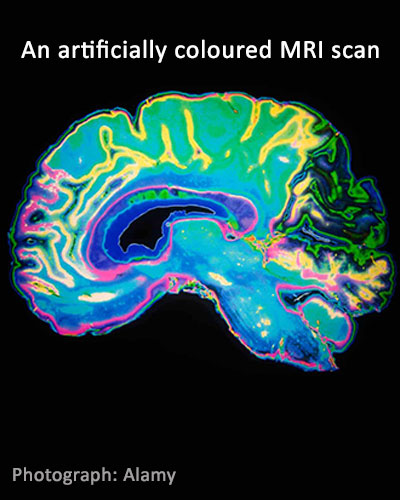September 08, 2020 | Deborah Kotz

Research Could Lead to New Understanding of Interplay Between Cognitive Disorders and Opioid Abuse Linked to Persistent HIV Infections
Researchers at the University of Maryland School of Medicine (UMSOM) have received a nearly $7 million grant to be disbursed over five years from the National Institute on Drug Abuse (NIDA), which is part of the National Institutes of Health (NIH). The grant, provided to the Institute for Genome Sciences (IGS) at UMSOM, will be used to establish an online data coordination center to enable researchers to store and access data sets generated by a program called Single Cell Opioid Responses in the Context of HIV (SCORCH).
These data sets include genetic data (in the form of RNA and DNA sequencing) for several brain regions that are affected by persistent HIV infections and abuse of illicit drugs like opioids, cocaine and methamphetamine.


Both researchers have played key roles in establishing the Neuroscience Multi-Omic Data Archive (NeMO), a database that contains genetic information relevant to the diversity of cell types in the brain and their abnormal functioning in brain diseases. SCORCH is a national consortium that leverages NeMO as well as other NIDA-funded databases that focus on HIV and substance abuse disorders.
HIV-infected patients suffer more frequently from chronic pain often due to neurological conditions caused by their infection. Doctors traditionally treated this pain with opioids, which led over time to more HIV-infected individuals developing opioid use disorder. Persistent HIV infections can also cause cognitive problems including anxiety, depression, confusion and even full-blown dementia. A major impediment to developing better treatments for opiate abuse and addiction, as well as for neurological symptoms in HIV, is the lack of knowledge regarding the action of drugs and of virus on select cell subtypes in the complex central nervous system. The SCORCH program will close these gaps by using sophisticated data sets to better understand, on a molecular level, the interplay between opioid use disorder and HIV-related cognitive impairment.
The team will collect data through the SCORCH project consortium, which includes investigators at the UMSOM, the Broad Institute, and the Yale Cancer Center, and the J. Craig Venter Institute. The information incorporated into the NeMO-SCORCH data center will, in part, enable understanding of genomic regions associated with brain abnormalities and disease.
SCORCH researchers will study post-mortem human brain tissue of individuals with opioid disorder and HIV-associated cognitive impairment, using new technologies for “single-cell” genomics to quantify gene expression patterns in millions of single-cells. The roles of the SCORCH data center will be to organize data from the consortium, make it accessible to researchers around the world, and conduct integrative data analysis to provide insight into how each brain cell type changes in the context of opioid use disorder and HIV.
In addition to Drs. White and Ament, other co-investigators from UMSOM on this project include Linda Chang, MD, MS, Professor Diagnostic Radiology and Nuclear Medicine, UMSOM; Ronna Hertzano, MD, PhD, Associate Professor of Otorhinolaryngology - Head & Neck Surgery, UMSOM; Mary Kay Lobo, PhD, Professor, Anatomy and Neurobiology, UMSOM; Michelle G. Giglio, PhD, Associate Professor, Medicine, IGS, UMSOM; and Anup Mahurkar, Executive Director of Software Engineering & Information Technology at IGS.
“Data-driven science holds the key to unlocking the cellular mechanisms that drive brain function,” said E. Albert Reece, MD, PhD, MBA, Executive Vice President for Medical Affairs, UM Baltimore, and the John Z. and Akiko K. Bowers Distinguished Professor and Dean, University of Maryland School of Medicine. “There is so much we still do not understand about opioid use disorder and how it relates to neurological conditions associated with HIV infection. This new research should provide important new insights.”
About the University of Maryland School of Medicine
Now in its third century, the University of Maryland School of Medicine was chartered in 1807 as the first public medical school in the United States. It continues today as one of the fastest-growing, top-tier biomedical research enterprises in the world -- with 45 academic departments, centers, institutes, and programs; and a faculty of more than 3,000 physicians, scientists, and allied health professionals, including members of the National Academy of Medicine and the National Academy of Sciences, and a distinguished two-time winner of the Albert E. Lasker Award in Medical Research. With an operating budget of more than $1.2 billion, the School of Medicine works closely in partnership with the University of Maryland Medical Center and Medical System to provide research-intensive, academic and clinically based care for nearly 2 million patients each year. The School of Medicine has more than $540 million in extramural funding, with most of its academic departments highly ranked among all medical schools in the nation in research funding. As one of the seven professional schools that make up the University of Maryland, Baltimore campus, the School of Medicine has a total population of nearly 9,000 faculty and staff, including 2,500 student trainees, residents, and fellows. The combined School of Medicine and Medical System (“University of Maryland Medicine”) has an annual budget of nearly $6 billion and an economic impact more than $15 billion on the state and local community. The School of Medicine faculty, which ranks as the 8th highest among public medical schools in research productivity, is an innovator in translational medicine, with 600 active patents and 24 start-up companies. The School of Medicine works locally, nationally, and globally, with research and treatment facilities in 36 countries around the world. Visit medschool.umaryland.edu
Contact
Office of Public Affairs
655 West Baltimore Street
Bressler Research Building 14-002
Baltimore, Maryland 21201-1559
Contact Media Relations
(410) 706-5260
